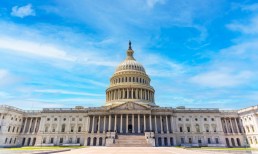The spring break season, usually a major U.S. travel period for college students, now looks desolate as the pandemic continues, with only around one in eight Americans planning a trip this year, a report from the U.S. Travel Association says.
That comes even as vaccines are becoming more available. According to the report, travel intentions are falling, with the 12 percent from this study down from 16 percent from a week ago when the question was first posed.
The reasons are predictable, as the population by and large is still COVID-weary, avoiding travel and gathering in big groups. Until the vaccines have been doled out to more of the population, many of them likely will remain reluctant. But this will likely result in more difficulties for the ravaged travel industry. Of the many jobs lost in the pandemic, 39 percent were in the hospitality industry.
But among those who do plan to travel anyway, the top reason was relaxing to escape stress, with 73 percent saying so, and 71 percent said they wanted to spend more time with family. Seventy-one percent said they wanted to escape boredom and 68 percent said they wanted to explore new places. Sixty-seven percent said they wanted to “get away from daily life.”
Overall, the report says the data has shown it’s still far from certain when the travel industry will really rebound.
U.S. Travel Association President and CEO Roger Dow said the recovery “will only be possible if Washington moves quickly to keep the industry on its feet,” the report says.
Advertisement: Scroll to Continue
“A true travel comeback can also only happen once the pandemic is decisively behind us, and we all have an important part to play: get vaccinated as soon as you can, and don’t become complacent about mask-wearing and other important health practices,” he said, according to the report.
The question of when people will feel ready to return to normal has lingered since the pandemic began. In a recent PYMNTS survey, 59 percent of respondents said a vaccine would be needed in order to go back, with 38 percent saying that was the first most important factor. Another 14 percent said decreased numbers of cases would be needed to feel safe as well.




